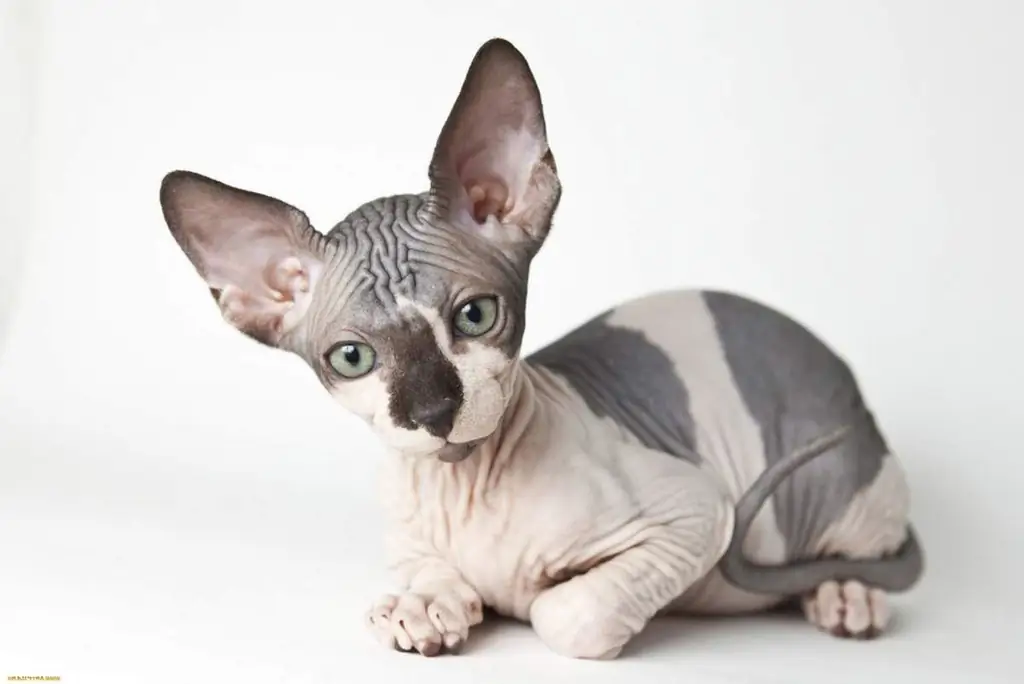
Table of contents:
- Author Bailey Albertson [email protected].
- Public 2024-01-17 22:26.
- Last modified 2025-06-01 07:32.
Sphinx - a cat from another planet

Perhaps, of all the many cat breeds, none causes such controversial reviews as the Sphynx. This animal is considered either a perfect creature or a hideous monster. No halftones. Bald cats really look more than unusual, but in addition to their appearance, Sphynxes have other features that greatly distinguish them from other breeds and which you should know about before deciding to purchase such a pet.
Content
- 1 History of the origin of the breed
-
2 External features
- 2.1 Table: differences in the appearance of the Canadian, Don and St. Petersburg sphinxes
- 2.2 Photo gallery: types of sphinxes
- 3 The nature and behavior of sphinxes
-
4 Health
- 4.1 Hereditary diseases
- 4.2 Acquired diseases
-
5 Features of the content of sphinxes: what to prepare for
- 5.1 The myth of hypoallergenic hairless cats
- 5.2 We do not shed, but we sweat
- 5.3 In the cold we freeze, in the heat we burn
-
6 Breeding sphinxes: no room for error
- 6.1 Table: allowed autocrosses (interbreed mating) in sphinxes
- 6.2 Photo gallery: cat breeds with which you can cross sphinxes
- 7 Video: Sphynx is the most unusual cat
- 8 Reviews of breed owners
History of the origin of the breed
Most new breeds of domestic animals appear as a result of systematic and long work on crossing two or more species in order to consolidate the most valuable qualities from both parents in the offspring. For example, very often enthusiasts try to mix the blood of an overseas exotic breed and an aboriginal animal that has strong immunity, excellent health and is maximally adapted to life in these climatic conditions.

Most often, new cat breeds are obtained as a result of crossing decorative and aboriginal animals.
With the sphinxes, it was completely different.
Hairlessness is a gene mutation. It turns out that a naked kitten can be born to any cat as a result of some kind of malfunction, the exact cause of which scientists have not yet fully figured out. This happens extremely rarely and, as you might guess, in the wild, such an animal has no chance of surviving. Thus, the genetic error is "corrected" quickly and harshly: hairless cats do not live to puberty and do not leave offspring.
But one day a kitten deprived of hair appeared in the litter of a domestic pet (it was an ordinary short-haired cat). A strange event happened in 1966 in Canada, Ontario. The owners decided that the unfortunate baby was sick and began to drag him around to various doctors, of course, to no avail. And at some point, completely desperate, the owners suddenly discovered an amazing thing: despite the fact that the animal's fur did not appear, it did not look sick at all. Bare skin, covered with wrinkled folds, was the only thing that distinguished Pruno (as the cat was called, from the English "prune" - prune) from his brothers and sisters. Then the owners looked at the unusual beast even more carefully, thought about it and decided: there is something in this.

A kitten born without hair was first tried to heal
You can guess the future. Pruno was introduced to his own mother and - lo and behold! - got three hairless kittens in the litter. They, in turn, began to interbreed with each other and, thus, the mutation, which was originally a mistake of nature, began to be consciously fixed by man as a new breed of cats.
However, Pruno's descendants were not destined to become the ancestors of the Canadian Sphinxes. The animals were born weak and sickly, and with each successive generation mortality among them grew steadily, so the seemingly promising breeding work had to be curtailed, and the temporary decision of the Cat Fanciers' Association (CFA) on the recognition of the breed, issued in 1971, was considered premature and withdrawn.
But the genie was released from the bottle. When, in 1975, another bald kitten, not without humor called Epidermis, was born into an American family, and a year later his mother again brought the baby without hair, but already a girl (she was named Dermis), who was also born from another father, half they no longer tried to heal the brother and sister, but immediately began to use them in breeding work. Given the sad experience of the Canadians, when crossing hairless cats they added a little blood of the Devon Rex, a breed with very short plush hair, as a result of which, finally, it was possible to obtain viable offspring.

The viability of the Sphynx was fixed by crossing a naked cat with a Devon Rex
International felinological organizations, however, resisted for a very long time before giving the breed official status. Such doubts are easy to understand, because, in fact, it was about the consolidation of a genetic pathology, the essence of which remained unknown: the extremely low viability of the first hairless cats could be explained not only by inbreeding (crossing of close relatives), but also by hereditary diseases directly related to the hairless gene. Looking ahead, we note that the fears were not unfounded.
The first international organization to recognize the Sphinx was TICA, The International Cat Association. This happened in 1985, then the breed standard was approved by other international associations of felinologists, and the CFA, which already had a negative experience of "communication" with naked cats, this time gave up its position to the last, in 1998.
Almost parallel with the Canadian, but still a little later, two more varieties of sphinxes were formed - the Don and St. Petersburg.
Most sources associate their origin with a touching story that happened in 1987 in Rostov-on-Don. Allegedly, one simple teacher, returning home from work, beat off a strange cat without hair from local hooligans, took it into the house and named it Barbara. And when two bald kittens were found in Varvara's litter, they were crossed with a European Shorthair cat, a little blood of Siberian and Russian blue breeds was added to the resulting hybrid. This is how the Don Sphynx appeared, from which, by mating with orientals, the St. Petersburg Sphinx, or Peterbald (from the English "bald" - bald), originated.

The European Shorthair cat took part in the formation of the Don Sphynx breed
At the risk of provoking indignation among the supporters of the "primordially Russian" origin of the two mentioned branches of the sphinxes, I would like to note that from international experts-felinologists I have heard a slightly different version of the development of events. In the late 80s of the last century, several very unusual hairless cats were privately brought into the Soviet Union. Professionally breeding them in a country closed from the whole world was quite problematic due to the limited number of original individuals, which, apparently, explains the mating with aboriginal breeds - European shorthaired, Siberian, Russian blue. At international exhibitions, where the offspring obtained in this way were presented, such cats, of course, were disqualified, since they did not formally meet the standard of the Canadian Sphynx. The Russians, however, are not known to give up. Instead of grieving about the "defectiveness" of their pets, enthusiasts directed their efforts to legalize them as a new breed, and these works were crowned with success, and the Canadian Sphynxes "Russified" due to local bloods received the name Don Sphynxes.

International experts did not immediately accept the new breed
The second version seems more plausible to the author. First, it is unlikely that almost simultaneously and independently of each other in different parts of the world, a cat breed was bred, based on the fixation of the same, rather rare mutation. Secondly, in the Soviet Union, until its collapse, felinological science practically did not develop. Breeding work, pedigrees, exhibitions and medals - all this existed only for dogs, while the attitude towards cats was rather disdainful. In such conditions, it is impossible to imagine that a cat that looked more than strange, found on the street somewhere in the outback, could become the object of close attention of breeders and the ancestor of an exotic breed.
On the other hand, in favor of the absence of a common ancestor in the Canadian and Soviet line of hairless cats, it is said that hairlessness in them is determined by different genes: in Canadians it is recessive, and in Donetsk and Peterbalds it is conventionally dominant.
One way or another, the Don and St. Petersburg Sphynxes are today recognized by the World Cat Federation (WCF) and the aforementioned TICA.
External features
Although we are talking about several different breeds, outwardly they have a lot in common. None of the existing standards establish strict requirements for size, however, in general, sphinxes are small but strong cats weighing from 3 to 8 kg and a height of 25-30 cm at the withers (girls are smaller, boys are larger), with a wedge-shaped muzzle, slanted eyes and large erect ears. Colors can be any.
Experts say that Canadians, Donchaks and Petersbolds differ radically from each other, but for someone who has never kept naked cats, this difference may not seem so noticeable. Let's try to systematize the main features of each of the three sphinxes in the form of a table.
Table: differences in the appearance of the Canadian, Don and St. Petersburg sphinxes
| Sign | Canadian sphinx | Don Sphynx | Peterbald |
| Muzzle | Round | Not long, slightly narrowed, chin as if cut off | Long with a flat forehead |
| Vibrissae ("mustache" and "eyebrows") | Broken and short | Crimped, thick, break off easily, may be missing | Strongly twisted or absent |
| Ears | Wide, open and very large, standing up straight, hairless inside | Wide, large, slightly inclined forward, rounded tips | Wide, very large, set low and slightly spread apart |
| Eyes | Large, slightly rounded, the color must match the color, green and greenish-brown are allowed | Almond-shaped, set obliquely, not wide open, any color | Almond-shaped, obliquely set, green or blue, depending on color |
| Body | Muscular, not graceful, with a broad chest and a slightly sagging belly | Strong, muscular, dense | Elegant, muscular, flexible |
| Tail | Flexible, agile and thin, sometimes with a tassel at the end, the length is proportional to the body | Long, flexible, straight and strong | Very long and thin, pointed at the end |
| Limbs | Long and muscular, the hindquarters are slightly longer, and the front are curved like a bulldog | Medium length (jumping ability is not very developed) | Long and thin |
| Skin covering | Apparent hairlessness, light fluff, to the touch resembling peach skin | Residual hair disappears by the age of two, fluff may be present at a young age, and even short hair on the face | Naked or covered with light down |
| Folds | Covers the whole body, especially in kittens | On the head, neck, armpits, groin | Much on the head, less on the body |

Sphynx colors can be very different
If the Canadian Sphynx is characterized by a single type of wool (residual fluff with a “suede effect”), then the Don Sphynxes and Peterbalds can have several variants of the skin:
- complete absence of hair (such cats are called naked, rubber or plasticine);
- brush (from the English "brush" - brush) - hard, bristly hair up to 5 mm long, covering the whole body, except for some areas on the head, neck or back;
- flock - very short, almost invisible hairs on the skin, favorably shading the color;
- velor - soft and thin hairs no more than 2 mm long, covering the whole body, visually noticeable, especially on the paws, muzzle and tail;
- the presence of hair - in such kittens the hairless gene does not appear, although they retain all the other external signs characteristic of the sphinx.
The most valuable are the naked sphinxes. Varietta brush is allowed for breeding and is not considered a marriage, but championship titles are not assigned to such cats. Flock and velor are full-fledged variations of sphinxes, moreover, many owners prefer just such cats, since not everyone likes the sensation of touching the absolutely bare skin of their pet. As for full-haired specimens, strictly speaking, they are not sphinxes, but Peterbalds of this type can be used in breeding if they have well-defined other traits that are valuable for the breed (proportions, shapes of certain body parts, color, condition, etc.).
Photo gallery: types of sphinxes
-

canadian sphinx - The Canadian Sphynx is a strong and muscular animal
-

don sphinx - The Don Sphynx has shorter legs, and fewer folds on the body
-

peterbald - Peterbald - grace and lightness
-

sphynx with short hair - Sometimes the hairless gene doesn't show up
-

peterbald brush - Brush - short and harsh coat
-

peterbald velor - Velor is thin hairs that cover the whole body
The character and behavior of the sphinxes
Surprisingly, in describing the nature of the sphinxes, the opinions of the owners differ radically. Some argue that Canadians are reserved and even sometimes aggressive, while Donetsk people are curious, friendly and playful. Others have noted a docile disposition and mobility in Canadian cats. To some, cats seem very quick-witted and easy to train, others consider them gloomy and very unclean.

Many note the playfulness and curiosity of the sphinxes
The French say that in the sphinx there are little by little features of a cat, a dog, a monkey and a child: this animal is extremely graceful, loyal, playful and affectionate. But no matter how beautiful this comparison sounds, not everyone agrees with it.

A cat can get along well with children.
Indeed, many people note with what joy naked cats jump on the lap of their owners, and associate this habit with tenderness and affection. However, my friend, who has a Sphynx, shared the feeling that at such moments she very clearly reads the same thought in the eyes of her pet: “I hate you! But you are warm. And I must say that in such a suspicion she is not alone.

Perhaps the cat is just cold!
I would venture to suggest that, as for most cat breeds, the character of the Sphynx, even in the most general terms, is not something programmed, attached to the standard. These animals can be kind and evil, playful and lazy, loving their owners and absolutely indifferent to them. Only two things remain unchanged:
- A cat is always independent, wanders wherever she pleases and walks by itself, and therefore can respond to obsessive affection with irritation: at best, leave, at worst - start to defend herself.
- Aggression, if not motivated, is a serious defect. Such animals are always disqualified and not allowed to participate in breeding.

Unmotivated aggression is a serious defect
Health
There are a number of common misconceptions about the health of sphinxes and, as always, very contradictory ones. So, many "experts" believe that these animals have strong immunity, especially against infectious diseases, explaining this by the increased body temperature characteristic of bald cats.
It is a myth. Sphynx body temperature is in the same range as that of any other cat breed: 38.0-39.5 ° С. Simply by touching the bare skin of an animal, we feel that it is hotter than ours, while the "layer" in the form of wool hides this difference.

The body temperature of the Sphynx is not higher than that of other cats
But it is also wrong to say that sphinxes have poor health. They do not get sick more often than other cats, although there are problems in relation to which this breed belongs to the risk group. Some of them are hereditary, probably associated with the gene for hairlessness, others are subject to the animal due to the peculiarities of its structure.
Hereditary diseases
One of the most unpleasant congenital diseases characteristic of the breed is hypertrophic cardiomyopathy - an asymmetric thickening of the walls of the heart's ventricle. It develops more often in males, the critical age is from three to five years. This pathology is found in other cats, but for sphinxes, unlike, for example, Maine Coon or Ragdoll, this is precisely a genetic pathology, and it cannot be detected using tests.
Sphynxes often suffer from myopathy, a serious progressive muscle disorder, possibly inherited from the Devon Rex, who are also susceptible to this disease.
Airway obstruction is no less dangerous, which can lead to death of the animal.
Gingival hyperplasia is a problem characteristic of blue, blue-cream and tortoiseshell cats, a genetic pathology, combined with a weakened immune system and a predisposition to purulent conjunctivitis.
"Kittens falling asleep syndrome", or, in scientific terms, congenital underdevelopment of the thymus, is directly related to the gene for hairlessness, therefore, it is especially characteristic of naked sphinxes, which survive extremely poorly: from the second to the tenth day of life, initially completely healthy babies die one after another.
Microphthalmia (abnormal development of the eyes), congenital keratitis, incomplete opening of the palpebral fissure, volvulus of the eyelids and other pathologies of the organs of vision are another misfortune of the sphinxes, especially the naked ones.

Pathologies of the organs of vision in sphinxes occur very often
Curvatures and wrinkles of the tail are a pathology that excludes the participation of an animal in breeding, since, as it has been established, in subsequent generations it manifests itself in the form of anomalies that are incompatible with life.
Acquired diseases
Due to the lack of hair, sphinxes very often suffer from:
- conjunctivitis (a problem caused by a lack of eyelashes to protect the eye);
- seasonal dermatitis (especially cats before and after estrus are prone to this problem).
- vasculitis (often caused by stress);
- acne (acne);
- obesity (we will dwell on this problem).

Being overweight is a common problem for sphinxes
Features of the content of sphinxes: what to prepare for
Sphynxes, no matter how unusual they may seem, are still cats. Their life expectancy is the same as that of other breeds - on average 12-15 years, but sometimes more (for example, the above-mentioned Epidermis, the ancestor of the Canadians, only slightly fell short of 17 years, and the Canadian Sphynx Granpa Rexs Allen is considered the record holder, who managed to celebrate his thirtieth birthday).
There are no fundamental differences in the conditions of keeping hairless cats in comparison with the usual ones. Tray and scratching post training, high-quality and balanced nutrition, mandatory sterilization of animals that are not used in breeding, regular vaccinations (annually) and deworming (as needed, preferably once every three months) - everything is like everyone else.

Sphynx needs to be fed the same way as other cats.
However, there are things that can be an unpleasant surprise for someone who first encountered the presence of a naked cat in the house, and it is worth dwelling on them in more detail.
The myth of hypoallergenic hairless cats
Allergies are a very common reason why people who adore animals cannot afford to have a pet. Traditionally, it is believed that wool causes a negative reaction, and therefore, having learned about the existence of naked cats, allergy sufferers happily grab the idea of acquiring such a miracle. And they get a serious problem.
The Sphynx is as allergic as any other cat breed. This is confirmed by the numerous reviews of the owners who have become victims of their own myth.

If you are allergic to cats, it is also to the sphinx
By the way, the author would not advise buying other "recommendations" about which cat to buy so that there is no allergy (they say, for example, that dark animals are more dangerous than light ones, cats are worse than cats, and sterilized animals are less allergenic). If the animal is constantly in your home, even a small amount of the allergenic protein it produces will make your life miserable.
Let's not deceive ourselves. No matter how far medicine has advanced in the treatment of allergy symptoms, the most civilized way to solve the problem is to eliminate contact with the source (as the classic said, pineapples will pass, and allergies will pass).
We do not fade, but we sweat
Another illusion about the benefits of hairless cats is that they do not shed and do not need to be combed out. In fact, caring for a sphinx's skin is much more difficult than caring for a cat's hair.
Lack of hair for a cat is an unnatural condition. In an effort to protect bare skin, the sebaceous glands of the animal begin to produce in large quantities a specific wax-like substance, which, mixing with sweat and dirt, covers an uneven coating on the face, stomach, paws and other parts of the cat's body, including the inner side of the ears. It appears as unsightly brown patches of uneven texture, sometimes surrounded by flaky skin. An unpleasant sight in itself, but, even worse, this greasy dirt leaves its marks on the bed, upholstered furniture and even walls!

The sphinx's skin is covered with unaesthetic brown spots
Sphynx owners are forced to regularly remove "dirt" from the skin of their pets, fortunately, plaque is removed quite easily. Someone advises to bathe the cat, arguing that most representatives of the breed adore water procedures, someone prefers to use a damp cloth.
But let's not forget the main thing: greasy plaque is not a disease. Thus, animals deprived of hair are forced to pay for our irresponsibility. Removing "spots" from our pet, we make it absolutely defenseless in front of the outside world, to which the unfortunate animal is not at all adapted. Bathing is harmful to any cat precisely because the water washes away the protective plaque from the skin, but for some reason the person decided that the Sphynx was an exception. The more often we bathe the sphinx or rub it with a wet rag, the more problems will arise with the cat's skin (dryness, peeling, acne, acne, etc.), and the activity of sebum production from attempts to wash it off only increases.

Skin problems are common for the sphinx
In the cold we freeze, in the heat we burn
The Sphinx is freezing all the time, and this circumstance can also create certain problems for its owner. Firstly, some animals suffer from the cold so much that they spend their entire lives under a blanket, and their owners do not get the joy of communicating with a playful pet at all. Secondly, the sphinxes are constantly hungry and demand food so actively that it can be difficult to refuse them. Obesity does not color any animal, but hanging folds of fat look especially disgusting on a naked cat.

Sphinxes are freezing all the time
And even that is not all. If you are lucky enough to live in a country with a warm climate - do not rush to rejoice, believing that your naked cat will be happy! An acquaintance of mine lived in Ireland for several years, where she acquired a Canadian Sphinx. The kitty constantly had to be dressed and wrapped up, but still she almost never left her nest. And so the hostess moved to Sydney, taking with her a little frost. But one problem was replaced by another. The cat began … to burn in the sun. Even short sunbathing on the windowsill, where the animal settled down, watching what was happening on the street, turned into real sunburn, so the owner had to buy a children's sunscreen with a maximum protection level of SPF 50 and lubricate her pet's fur with it every morning. I will not say that such a procedure, of course,protects from the sun, but is very harmful to the skin, in a word, a vicious circle.

Sphynx skin is easily sunburned and needs protection
Breeding sphinxes: no room for error
The genetics of sphinxes is a delicate matter. The hairless gene that makes these cats unusual is, unfortunately, directly related to many other traits, including vicious ones, and this applies to both Canadian and domestic breeds of hairless cats. Ideally, only professional felinologists should be engaged in breeding sphinxes, but even they are not always able to prevent the birth of animals suffering from serious hereditary pathologies or being their carriers.

Breeding sphinxes is a delicate matter
For example, experts note that illiterate mating with unsuitable partners has a very detrimental effect on Peterbald, among which today, animals with tail wrinkles, squint, various skeletal pathologies, aggressiveness and other serious problems are especially common.
The volume of this article does not allow teaching a novice breeder the rules of breeding sphinxes, our task is rather to keep him from such an idea.
But if you do decide to take a chance, remember at least the basic rules. Can't knit:
- different breeds of sphinxes among themselves;
- two naked cats, the pair must have a brush or flock;
- animals of the same color, this also increases the risk of giving birth to kittens with hereditary pathologies.
Matching mates of the same breed is desirable, but the international standard allows some exceptions to this rule.
Table: allowed autocrosses (interbreed mating) in sphinxes
| Sphynx breed | Acceptable mating | A source |
| Canadian |
|
TICA |
| Don | short-haired common domestic cats (domus) | TICA |
| petersburg |
|
WCF |
Photo gallery: cat breeds with which you can cross sphinxes
-

american shorthair cat - American Shorthair can mate with a Canadian Sphynx
-

Siamese cat - Siamese cat is suitable for peterbald
-

javanese - Peterbald can mate with javanese
-

shorthaired domestic cat - Shorthair domestic cat - the only autocross for the Don Sphynx
Video: the sphinx is the most unusual cat
Breed owners reviews
Before adopting any pet, be it a cat, dog or guinea pig, you need to think carefully. But if your choice fell on the Sphinx, you should think ten times. These seemingly unearthly creatures have a whole army of fans, but there is also a large number of those who experience real suffering from the fact that they could not love their pet. Take a closer look at the exotic cat and ask yourself if you are ready to make her happy. If so, let it be so!
Recommended:
Russian Blue Cat: Description Of The Breed, Photos, Features Of Care And Maintenance, Breeding Cats, Choosing A Kitten, Owner Reviews
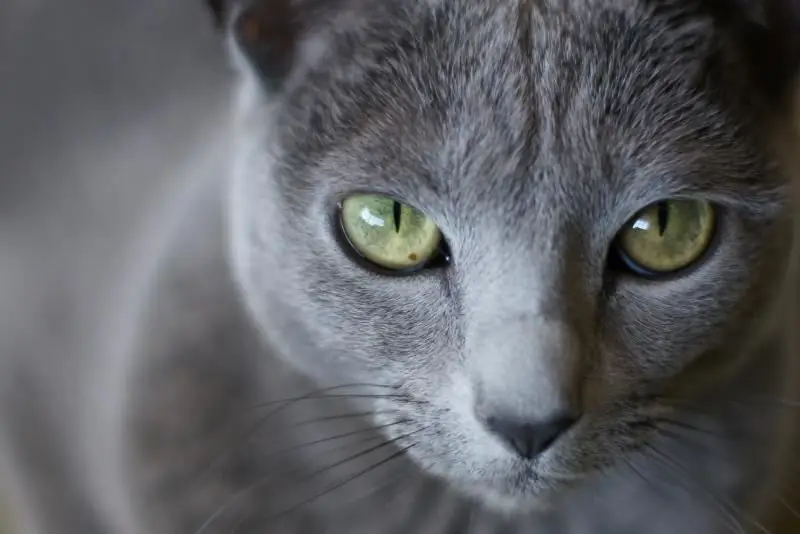
Everything you need to know about the Russian blue cat: the history of the formation of the breed, characteristics, behavioral features, rules for the care and breeding of animals
Siamese Cat: Description Of The Breed, Character And Habits, Owner Reviews, Photos, Kitten Selection, Difference From Thai Cats
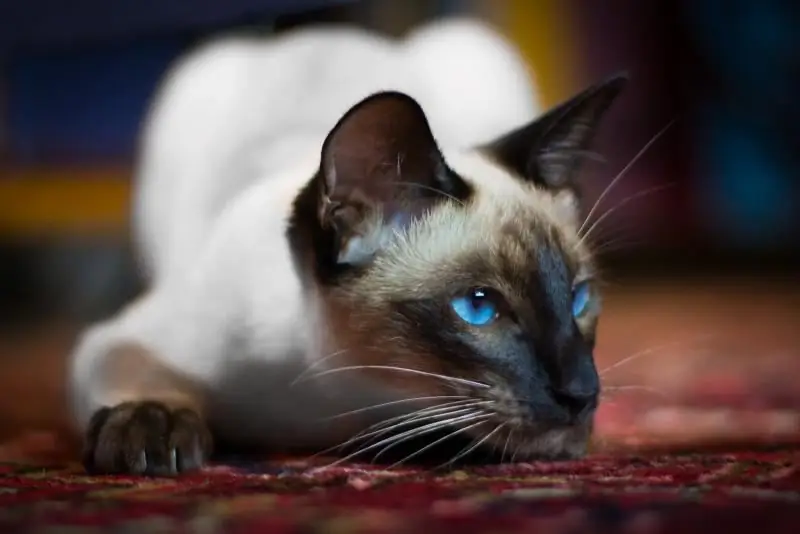
Everything you need to know about the Siamese cat: the history of the breed, how Siamese cats differ from Thai cats, how to care for them, how to choose purebred kittens
Neva Masquerade Cat: Description Of The Breed, Possible Colors, Character And Habits, Advantages And Disadvantages, Choosing A Kitten, Photo, Review
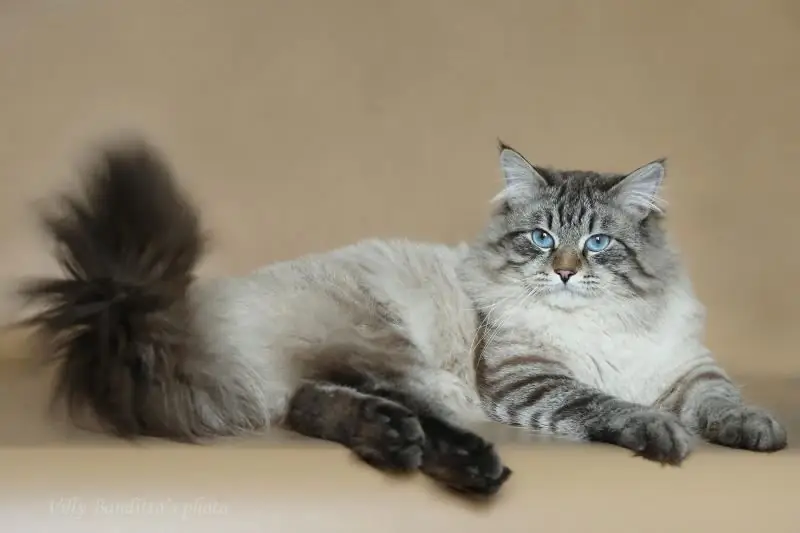
The origin of the Neva Masquerade Cat. Features of appearance. The nature and habits of the Neva cat. Diseases of the breed. Hygiene. Acquisition and breeding issues
Cat Burmilla: Description Of The Breed, Nature And Features Of The Content, Photos, Choosing A Kitten, Reviews Of The Owners, Breeding Cats
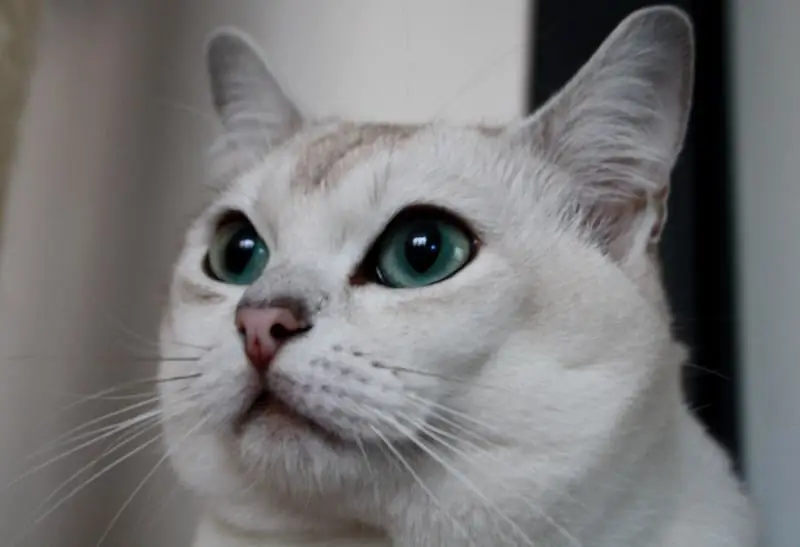
The origin of the Burmilla breed. Features of appearance and behavior. Acquisition and breeding issues. Care and hygiene of the Burmilla. Life expectancy. Reviews
Selkirk Rex: Breed Description, Care And Maintenance, Photos, Breeding Cats, Choosing A Kitten, Owner Reviews
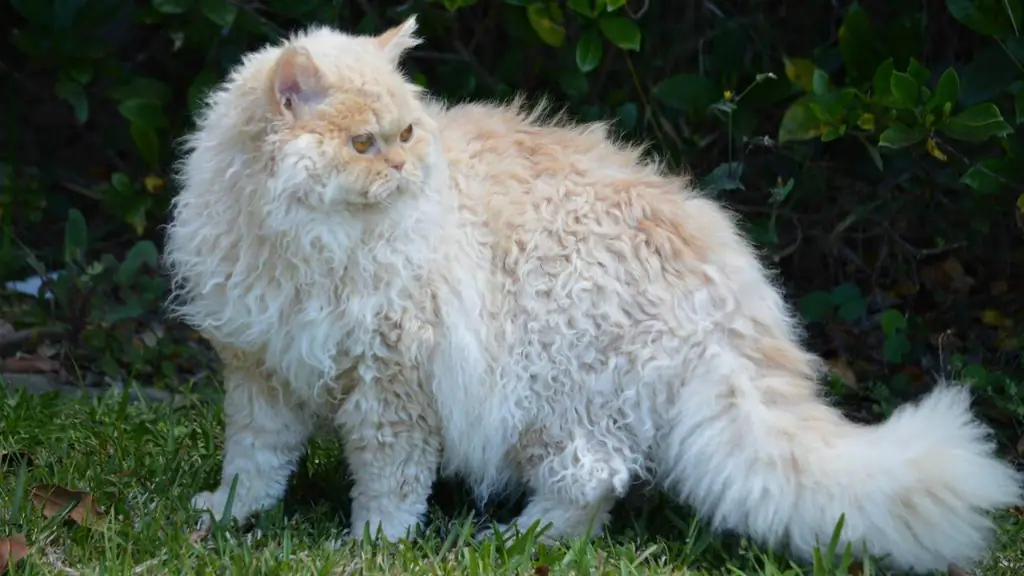
Where the Selkirk Rex breed was bred, its external differences and character. How to properly care for these cats, feed and treat them. How to choose a kitten. Reviews
